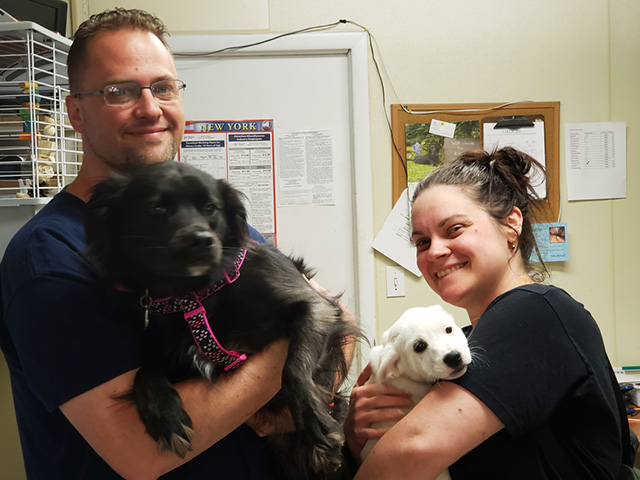The Realities of Pet Euthanasia
-
top
http://bronxjournal.com/wp-content/uploads/2019/06/top-1-640x480.jpg
-
20190517_125245-4
http://bronxjournal.com/wp-content/uploads/2019/06/20190517_125245-4-640x480.jpg
-
Staff
http://bronxjournal.com/wp-content/uploads/2019/06/20190517_124013-3-640x480.jpg
-
20190517_124853-4
http://bronxjournal.com/wp-content/uploads/2019/06/20190517_124853-4-640x480.jpg
-
20190517_124933-4
http://bronxjournal.com/wp-content/uploads/2019/06/20190517_124933-4-640x480.jpg
-
20190517_125001-4
http://bronxjournal.com/wp-content/uploads/2019/06/20190517_125001-4-640x480.jpg
-
20190517_125116-4
http://bronxjournal.com/wp-content/uploads/2019/06/20190517_125116-4-640x480.jpg
-
20190517_125132-4
http://bronxjournal.com/wp-content/uploads/2019/06/20190517_125132-4-640x480.jpg
-
20190517_124728-4
http://bronxjournal.com/wp-content/uploads/2019/06/20190517_124728-4-640x480.jpg
-
20190517_124815-4
http://bronxjournal.com/wp-content/uploads/2019/06/20190517_124815-4-640x480.jpg
-
20190517_124827-4
http://bronxjournal.com/wp-content/uploads/2019/06/20190517_124827-4-640x480.jpg
-
Dog feat
http://bronxjournal.com/wp-content/uploads/2019/06/dogfeat-640x480.jpg
By Wayne Townsend
People automatically equate the Humane Society with euthanasia and that is simply not true, says Maureen Hogan, manager of the Humane Society of Middletown, New York. “We are 100 percent no kill,” she said. “We don’t put down animals unless they are terminal. We have two dogs that have been here five years. We have another that has been deemed dangerous and he’ll live out his with us.”
Around 6.3 million pets enter U.S. animal shelters each year, according to the American Society for the Prevention of Cruelty to Animals (ASPCA). Approximately 3.3 million are dogs and 3.2 million are cats. This is a decline since 2011, when 7.2 animals were in shelters.
The ASPCA estimates that 1.5 million shelter animals are euthanized (670,000 dogs and 860,000 cats) each year. This also is a decline from 2011, when 2.6 million were euthanized. The organizations says the decrease is due in part to the increase in adoptions and returning of strays to their owners.
Euthanizing happens with greater frequency in the south. Best Friends has created a map showing No-Kill progress in the U.S.
According to Best Friends data, New York state had save rate of 86 percent, with an intake of 126,000 animals and 104,000 saved. Whereas New York needs to save 5,100 animals to achieve a No-Kill status, states like Texas need to save 125,000. The organization says it has a goal of achieving No-Kill status for the entire country by 2025.

Philip Dusenbury and Alice Yearwood with Aurora and the new addition to the family. This is a Meet and Greet to ensure the new puppy and Aurora are compatible.
Hogan said the Humane Society of Middletown receives no funding from the city and its budget is strictly donations. The organization provides spading, neutering, vaccinations, and chipping (locator chips).
Philip Dusenbury and Alice Yearwood are back to adopt a new dog. The eight-week old puppy (to be named later) is deaf. Hogan explained this particular handicap doesn’t hinder the life of the animal as much as we may tend to think. “Dogs are extremely sensitive to vibrations and they pick up hand signals very quickly.”
Yearwood follows the Humane Society of their Facebook page and with the recent death of her older dog, wanted give Aurora a new playmate. Dusenbury loves the playfulness the puppy will add to the household. “This one is very sociable and will play with the other dogs at the park.”
Pets Alive, another privately funded animal shelter in Middletown, also has a no-kill policy and gets many animals from southern states. Although Pets Alive has limited capacity, the organization will treat any animal, including livestock.
-
20190517_110632-4
http://bronxjournal.com/wp-content/uploads/2019/06/20190517_110632-4-640x480.jpg
-
20190517_110756-4
http://bronxjournal.com/wp-content/uploads/2019/06/20190517_110756-4-640x480.jpg
-
20190517_105903-5
http://bronxjournal.com/wp-content/uploads/2019/06/20190517_105903-5-640x480.jpg
-
joey-the-horse
http://bronxjournal.com/wp-content/uploads/2019/06/joey-the-horse-640x480.jpg
-
20190517_105454-4
http://bronxjournal.com/wp-content/uploads/2019/06/20190517_105454-4-640x480.jpg
-
20190517_105446-4
http://bronxjournal.com/wp-content/uploads/2019/06/20190517_105446-4-640x480.jpg
-
20190517_105505-4
http://bronxjournal.com/wp-content/uploads/2019/06/20190517_105505-4-640x480.jpg
Mary Ann Bopp, the development director at Pets Alive, says that anyone who wishes to adopt an animal must agree to return them to the organization, rather than releases them into the street. This guarantees that the animals will be in safe hands.
Bopp said Pets Alive also participates in a program called, Trap, Neutered, Return (TNR). “TNR refers to cats living in the wild,” she says. “They belong to colonies. Our staff traps them, spayed or neutered them, and treat any illness they may have.” Bopp said the cats are “ear tipped.” That way once they are returned to the colony, everyone knows that this particular cat has been spayed or neutered.
Saved under Featured Slide, Multimedia

